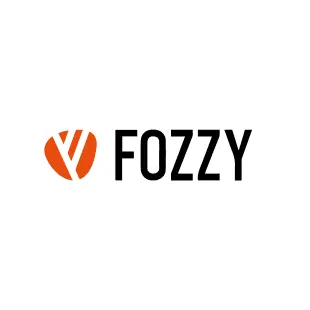MODELING OF NLP PROBLEMS OF CHEMICAL PROCESSES DESCRIBED BY ODEs

Because nowadays the queries are made by text or voice command on smartphones.one of the most common examples is Google might tell you today what tomorrow’s weather will be. But soon enough, we will be able to ask our personal data chatbot about customer sentiment today, and how we feel about their brand next week; all while walking down the street. Today, NLP tends to be based on turning natural language into machine language.
Intelligent Medical Objects Announces the Acquisition of Melax … – Business Wire
Intelligent Medical Objects Announces the Acquisition of Melax ….
Posted: Mon, 22 May 2023 07:00:00 GMT [source]
But which ones should be developed from scratch and which ones can benefit from off-the-shelf tools is a separate topic of discussion. See the figure below to get an idea of which NLP applications can be easily implemented by a team of data scientists. In my Ph.D. thesis, for example, I researched an approach that sifts through thousands of consumer reviews for a given product to generate a set of phrases that summarized what people were saying. With such a summary, you’ll get a gist of what’s being said without reading through every comment.
Natural Language Processing: Zero to NLP
ABBYY provides cross-platform solutions and allows running OCR software on embedded and mobile devices. The pitfall is its high price compared to other OCR software available on the market. So, Tesseract OCR by Google demonstrates outstanding results enhancing and recognizing raw images, categorizing, and storing data in a single database for further uses.

Whether you are an established company or working to launch a new service, you can always leverage text data to validate, improve, and expand the functionalities of your product. The science of extracting meaning and learning from text data is an active topic of research called Natural Language Processing (NLP). NLP machine learning can be put to work to analyze massive amounts of text in real time for previously unattainable insights.
Lesson 5 – Transformers, Pretrained Models, and Finetuning
Another reason for the placement of the chocolates can be that people have to wait at the billing counter, thus, they are somewhat forced to look at candies and be lured into buying them. It is thus important for stores to analyze the products their customers purchased/customers’ baskets to know how they can generate more profit. As we already revealed in our Machine Learning NLP Interview Questions with Answers in 2021 blog, a quick search on LinkedIn shows about 20,000+ results for NLP-related jobs.
- We want to build models that enable people to read news that was not written in their language, ask questions about their health when they don’t have access to a doctor, etc.
- One African American Facebook user was suspended for posting a quote from the show “Dear White People”, while her white friends received no punishment for posting that same quote.
- A good way to visualize this information is using a Confusion Matrix, which compares the predictions our model makes with the true label.
- To densely pack this amount of data in one representation, we’ve started using vectors, or word embeddings.
- A comprehensive search was conducted in multiple scientific databases for articles written in English and published between January 2012 and December 2021.
- The most direct way to manipulate a computer is through code — the computer’s language.
If these methods do not provide sufficient results, you can utilize more complex model that take in whole sentences as input and predict labels without the need to build an intermediate representation. A common way to do that is to treat a sentence as a sequence of individual word vectors using either Word2Vec or more recent approaches such as GloVe or CoVe. SaaS text analysis platforms, like MonkeyLearn, allow users to train their own machine learning NLP models, often in just a few steps, which can greatly ease many of the NLP processing limitations above.
Lesson 3 – Recurrent Neural Networks & Embeddings
This can partly be attributed to the growth of big data, consisting heavily of unstructured text data. The need for intelligent techniques to make sense of all this text-heavy data has helped put NLP on the map. Human language is filled with ambiguities that make it incredibly difficult to write software that accurately determines the intended meaning of text or voice data. One of them is Global Vectors (GloVe), an unsupervised learning algorithm for obtaining vector representations for words. Both models learn geometrical encodings (vectors) of words from their co-occurrence information (how frequently words appear together in a large text corpora). The difference is that word2vec is a “predictive” model, whereas GloVe is a “count-based” model.
- Our classifier correctly picks up on some patterns (hiroshima, massacre), but clearly seems to be overfitting on some meaningless terms (heyoo, x1392).
- To facilitate this risk-benefit evaluation, one can use existing leaderboard performance metrics (e.g. accuracy), which should capture the frequency of “mistakes”.
- For a detailed explanation about its working and implementation, check the complete article here.
- A general approach for noise removal is to prepare a dictionary of noisy entities, and iterate the text object by tokens (or by words), eliminating those tokens which are present in the noise dictionary.
- However, in some areas obtaining more data will either entail more variability (think of adding new documents to a dataset), or is impossible (like getting more resources for low-resource languages).
- Besides, transferring tasks that require actual natural language understanding from high-resource to low-resource languages is still very challenging.
Each word is encoded using One Hot Encoding in the defined vocabulary and sent to the CBOW neural network. The inverse document frequency or the IDF score measures the rarity of the words in the text. Use your own knowledge or invite domain experts to correctly identify how much data is needed to capture the complexity of the task.
Natural Language Processing (NLP) Challenges
With this, call-center volumes and operating costs can be significantly reduced, as observed by the Australian Tax Office (ATO), a revenue collection agency. Although functions can be non-smooth but convex (or smooth but non-convex), you can expect much better performance with most Solvers if your problem functions are all smooth and convex. A quadratic programming (QP) problem is a special case of a smooth nonlinear optimization problem, but it is usually solved by specialized, more efficient methods. Nonlinear functions, unlike linear functions, may involve variables that are raised to a power or multiplied or divided by other variables. They may also use transcendental functions such as exp, log, sine and cosine.

Sonnhammer mentioned that Pfam holds multiple alignments and hidden Markov model-based profiles (HMM-profiles) of entire protein domains. HMM may be used for a variety of NLP applications, including word prediction, metadialog.com sentence production, quality assurance, and intrusion detection systems [133]. Ambiguity is one of the major problems of natural language which occurs when one sentence can lead to different interpretations.
BERT (Bidirectional encoder representations from transformers)
Machine learning or ML is a sub-field of artificial intelligence that uses statistical techniques to solve large amounts of data without any human intervention. Machine learning helps solve problems similar to how humans would but using large-scale data and automated processes. Machine learning has algorithms that are used in natural language processing, computer vision, robotics more efficiently.
Why is NLP hard in terms of ambiguity?
NLP is hard because language is ambiguous: one word, one phrase, or one sentence can mean different things depending on the context.
In this article, I will focus on issues in representation; who and what is being represented in data and development of NLP models, and how unequal representation leads to unequal allocation of the benefits of NLP technology. The second problem is that with large-scale or multiple documents, supervision is scarce and expensive to obtain. We can, of course, imagine a document-level unsupervised task that requires predicting the next paragraph or deciding which chapter comes next. A more useful direction seems to be multi-document summarization and multi-document question answering.
Resources for Turkish natural language processing: A critical survey
Another major source for NLP models is Google News, including the original word2vec algorithm. But newsrooms historically have been dominated by white men, a pattern that hasn’t changed much in the past decade. The fact that this disparity was greater in previous decades means that the representation problem is only going to be worse as models consume older news datasets. Event discovery in social media feeds (Benson et al.,2011) [13], using a graphical model to analyze any social media feeds to determine whether it contains the name of a person or name of a venue, place, time etc.
What is an example of NLP failure?
NLP Challenges
Simple failures are common. For example, Google Translate is far from accurate. It can result in clunky sentences when translated from a foreign language to English. Those using Siri or Alexa are sure to have had some laughing moments.
Machine learning uses algorithms that teach machines to learn and improve with data without explicit programming automatically. The process of finding all expressions that refer to the same entity in a text is called coreference resolution. It is an important step for a lot of higher-level NLP tasks that involve natural language understanding such as document summarization, question answering, and information extraction. Notoriously difficult for NLP practitioners in the past decades, this problem has seen a revival with the introduction of cutting-edge deep-learning and reinforcement-learning techniques.
Statistical methods
The first objective of this paper is to give insights of the various important terminologies of NLP and NLG. The first objective gives insights of the various important terminologies of NLP and NLG, and can be useful for the readers interested to start their early career in NLP and work relevant to its applications. The second objective of this paper focuses on the history, applications, and recent developments in the field of NLP. The third objective is to discuss datasets, approaches and evaluation metrics used in NLP. The relevant work done in the existing literature with their findings and some of the important applications and projects in NLP are also discussed in the paper. The last two objectives may serve as a literature survey for the readers already working in the NLP and relevant fields, and further can provide motivation to explore the fields mentioned in this paper.
And because language is complex, we need to think carefully about how this processing must be done. There has been a lot of research done on how to represent text, and we will look at some methods in the next chapter. NLP techniques open tons of opportunities for human-machine interactions that we’ve been exploring for decades. Script-based systems capable of “fooling” people into thinking they were talking to a real person have existed since the 70s.

Their proposed approach exhibited better performance than recent approaches. For example, when we read the sentence “I am hungry,” we can easily understand its meaning. Similarly, given two sentences such as “I am hungry” and “I am sad,” we’re able to easily determine how similar they are. The text needs to be processed in a way that enables the model to learn from it.
- It is thus important for stores to analyze the products their customers purchased/customers’ baskets to know how they can generate more profit.
- Srihari [129] explains the different generative models as one with a resemblance that is used to spot an unknown speaker’s language and would bid the deep knowledge of numerous languages to perform the match.
- For example, in a balanced binary classificaion problem, your baseline should perform better than random.
- Early detection of mental disorders is an important and effective way to improve mental health diagnosis.
- In order to train a good ML model, it is important to select the main contributing features, which also help us to find the key predictors of illness.
- Right now, our Bag of Words model is dealing with a huge vocabulary of different words and treating all words equally.
How do you approach NLP problems?
- Step 1: Gather your data.
- Step 2: Clean your data.
- Step 3: Find a good data representation.
- Step 4: Classification.
- Step 5: Inspection.
- Step 6: Accounting for vocabulary structure.
- Step 7: Leveraging semantics.
- Step 8: Leveraging syntax using end-to-end approaches.


Leave a Reply
Want to join the discussion?Feel free to contribute!